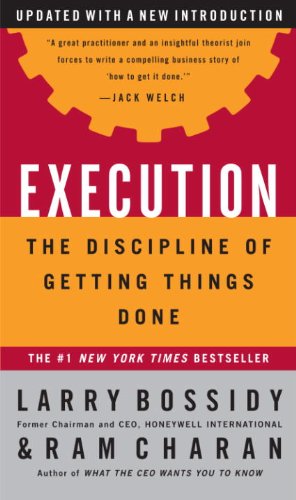Do Healthcare Companies need a Chief Exp. Officer?
What do I mean by Experience? Great customer-focused companies have built their business around the voice and perspectives of their customers. Healthcare companies, more specifically health insurance companies, are typically not primarily viewed as consumer-centric entities. The Affordable Care Act is a major impetus in changing healthcare from an almost industrialized, business-to-business modality to a retail one. This change is also driving healthcare companies to adopt the best practices of big box retailers and banks. One of those practices, albeit still somewhat new, is to have a C-level position dedicated to bringing emphasis on the customer to the forefront, as well as to govern the traditional business in how they “go retail.”
I advocate that all healthcare companies follow suit – provider, payers, and everyone in between – and create a Chief Experience Officer or Chief Customer Experience Officer.
Forrester has done some great research (April 2011 “Customer Experience Index, 2011: Health Insurance Plans”) on how customers feel about various industries. In 2009 health insurance ranked near the bottom at 51% – in 2011, it remained relatively unchanged – at 53%. What makes it worse is that other forms of insurance, like auto and life, rank much higher at 72%, so there should be no excuse for the healthcare companies to be satisfied with status quo. To also be perceived as lower than the cable companies is shocking, as it is nearly impossible in my experience to find someone who thinks they create great customer experiences.

Too many companies equate customer experience with customer service (or support). Service is a part of what makes a great overall customer experience. Experience is a lot more than just service and is certainly more than just a measure of your “first call resolution.” If you are more worried about solving the problems you create, as opposed to ceasing to cause problems altogether, you have missed the boat. Furthermore, if you consider “first call resolution” to technically be a good experience when the customer stays on the same phone call but talks with 3 or 4 “support specialists” and managers then you have again missed the boat.
WIKI defines “customer experience” as: “the sum of all experiences a customer has with a supplier of goods or services, over the duration of their relationship with that supplier. From awareness, discovery, attraction, interaction, purchase, use, cultivation and advocacy.”
This works for me. What is to be understood from this is that many single experiences accumulated together provide an overall customer experience, which in turn drives the attitudes and behaviors of a customer towards a company. Let’s take a look at what this might look like for an average healthcare consumer.
A Consumer’s Healthcare Vignette
Sam is employed and has his benefits through his employer. His company has sponsored an annual worksite wellness event where Sam gets his blood glucose and cholesterol checked. Sam also plans to get a full diagnostic screening using ultrasound technology sometime this year from his in-network primary care provider. He also scheduled an annual physical that includes a full blood lipid panel workup. Additionally, Sam has access to a kiosk located in his worksite clinic to check and report on his glucose levels. He also has a WebMD account through his employer but chooses not to use it because he perceives it as too complex. Sam’s wife gets a mailer from their insurance company inviting them to come in at the newly opened insurance retail center. If they do so – they get a free screening.
None of these experiences communicate to each other electronically, and none of them automatically or conveniently store Sam’s data in his Microsoft Health Vault account.
Because his previous annual physical showed a high glucose score, Sam was identified as pre-diabetic. He has received messages and calls about pre-diabetes care options from a “consultant” at his insurance provider. He wonders if this nurse works for his doctor and if not, does his doctor know she is calling and what she is saying. He wonders if his doctor would agree?
This only gets more confusing the more we go on. Consumer oriented or consumer focused companies understand and plan for an intentional customer experience. To drive a consistent customer experience (a branded experience) across all of your channels, you need someone in control who has both the purview and the spine to get things done. This example is where a Chief Experience/Customer Experience Officer comes in.
What is a Chief Experience Officer?
 This C-level position is most commonly referred to as the Chief Customer Officer (CXO), though other titles are used: Chief Client Officer (at OptumHealth), Chief Experience Officer (at Cigna), or Executive Vice President, Member Experience (at USAA). What is important to note is that these individuals are empowered to design, orchestrate, and improve customer experiences across every customer interaction.
This C-level position is most commonly referred to as the Chief Customer Officer (CXO), though other titles are used: Chief Client Officer (at OptumHealth), Chief Experience Officer (at Cigna), or Executive Vice President, Member Experience (at USAA). What is important to note is that these individuals are empowered to design, orchestrate, and improve customer experiences across every customer interaction.
In The Rise Of The Chief Customer Officer, a report by Forrester Research, they looked closely at this growing corporate trend. In summary, the report found that the role is far beyond just fixing the problems of unhappy customers. It is ultimately responsible for determining how to accelerate the practice of customer-centricity throughout an organization by teaching the techniques and building the capabilities that are needed to serve a consumer. This report, like many reports that deal with change management, also echoes the need for change to stem from the executive management team, which brings the impetus for change to the company and the customer’s voice into the boardroom.
In Chief Customer Officer – Getting Past Lip Service to Passionate Action, the role of the CXO is defined as:
- Influence agreement on what and how to deliver the greatest value to customers
- Establish metrics for defining relationships and value creation with customers
- Drive accountability through the organization for those data and metrics
- Clarify a common approach and process for driving the work across the organization
The Key Takeaways
So what should you get if your take the leap and create your own CXO role?
Better Design
You cannot have a good experience without good design. The CXO must be a believer in the principles of User Centered Design and invest in bringing those techniques into their company. In this role, creativity – not productivity is the key to business success. In my opinion, the incumbent should serve as the chief design officer as well. It does not mean that the CXO has to be a great designer, but they must appreciate the need for great design, recognize when they do not have it, and push to ensure they get it across all touch-points. This consistency can also be served by having a strong partnership with the brand team and brand officer.
Better Consistency
Consistently clear messages and appealing design only come when a company has a common design language and consistent design principles. If your company does not integrate the communications and consumer experience efforts, you will send mixed and probably confusing signals to your customers – without even trying. Brand is brand, and should stay that way. But ensuring the promise of the brand is delivered in a consistent and clear way, across channels, synchronized for maximum effectiveness, requires a CXO, in partnership with business operations and the brand team, to bring it to action.
Better Transparency
Consumers’ standards for clarity have changed. Regardless of what industry you are in, the best-in-class retailers are setting your customers’ expectations for a clear understanding of your products, their price, and what you are going to do when something goes wrong. But it is complex to deliver a good customer experience. Forrester analyst Liz Boehm says it best when she states the goal “it is not simply to provide what the consumer wants but provide it in a way that gives them information about something they might not want to understand.” Your customers expect you to have access to the same information about them as Amazon does, and the same winning attitude as Zappos does. Chances are that you are probably not there on either count right now. The role of the CXO is to bridge the communication gap and close the consumer’s disconnect between expectations and reality.
Can it work at a legacy Healthcare company?
How do we make it (customer experience focus) work? This question is a far better question for healthcare companies to ask then- can it work? For any healthcare company that is preparing to conduct business in an environment impacted by reform, the voice of the customer is, and should be, a priority. I advocate here to create the role and office of a CXO to drive, help lead, and manage your company’s journey towards ensuring that the customer’s perspective is always brought to the forefront, storefront, and boardroom for consideration in all business decisions.
It bears repeating that the CXO role is not a senior support role. A company should not, as Forrester’s research indicates, rush to appoint a CXO in the attempt to solve poor customer satisfaction ratings. As Hagan suggests in his HBR article, creating a CXO requires three preconditions for success:
- a mandate to differentiate based on customer experience, preferably from the CEO,
- a portfolio of successful projects that create buy-in across the organization, and
- a uniform understanding on the leadership team for what the position can accomplish.
While all retail companies must place emphasis on their customers’ perspective, a brand new C-level position may not always be necessary. As Manning states, the work of the CXO function is vital to achieving customer-centricity, but may be able to be fulfilled by an existing executive dedicated to overseeing and linking different functional groups, with the ultimate objective of maximizing customer and corporate value. Whether you appoint a CXO or not, it is clear that healthcare companies will benefit from a single executive, sitting on the executive management team, focused exclusively on the customer experience.
Some quick tips to get started
I plan to write more on these later but should you decide to create a CXO role here is a basic
6-step plan to get you started.
- Announce the Role and its Premise
- Design the Framework in which the role it will Exist and Operate
- Define the Resources internal and external to the Department
- Explain the Process, Tools, and Techniques that will support the framework
- Outline the Governance model for the strategy and work
- Publish the Metrics for Measurement
Here are some other good sources on Customer Experience.
To your health,
The Team at imagine.G







